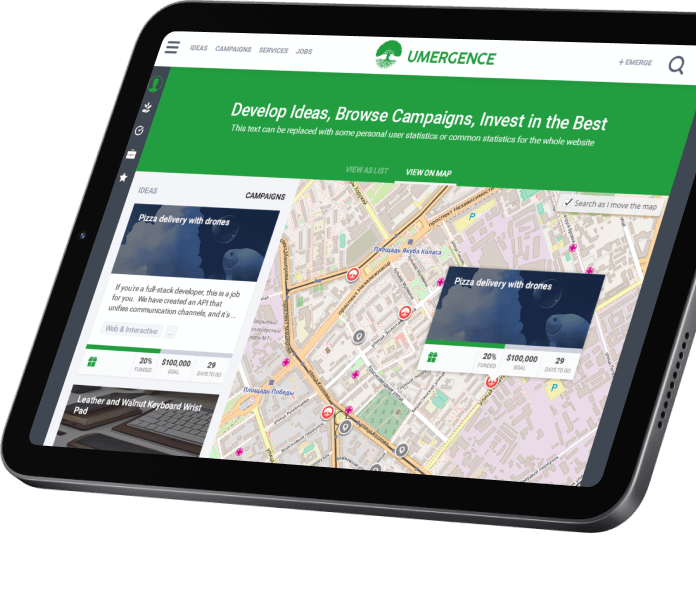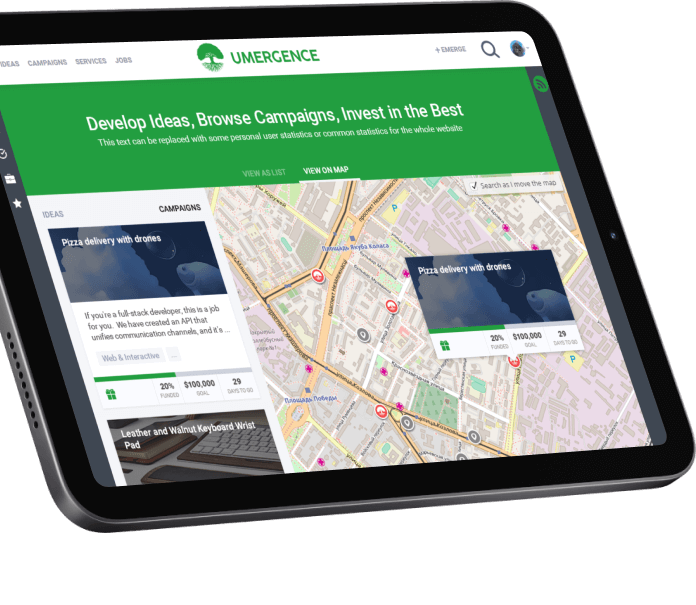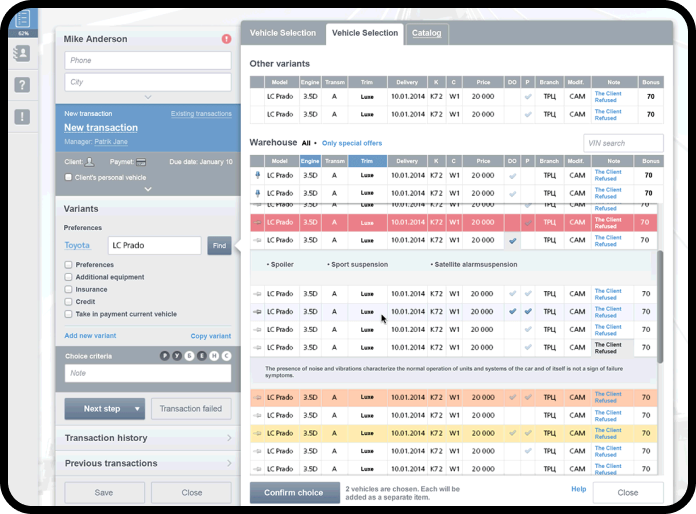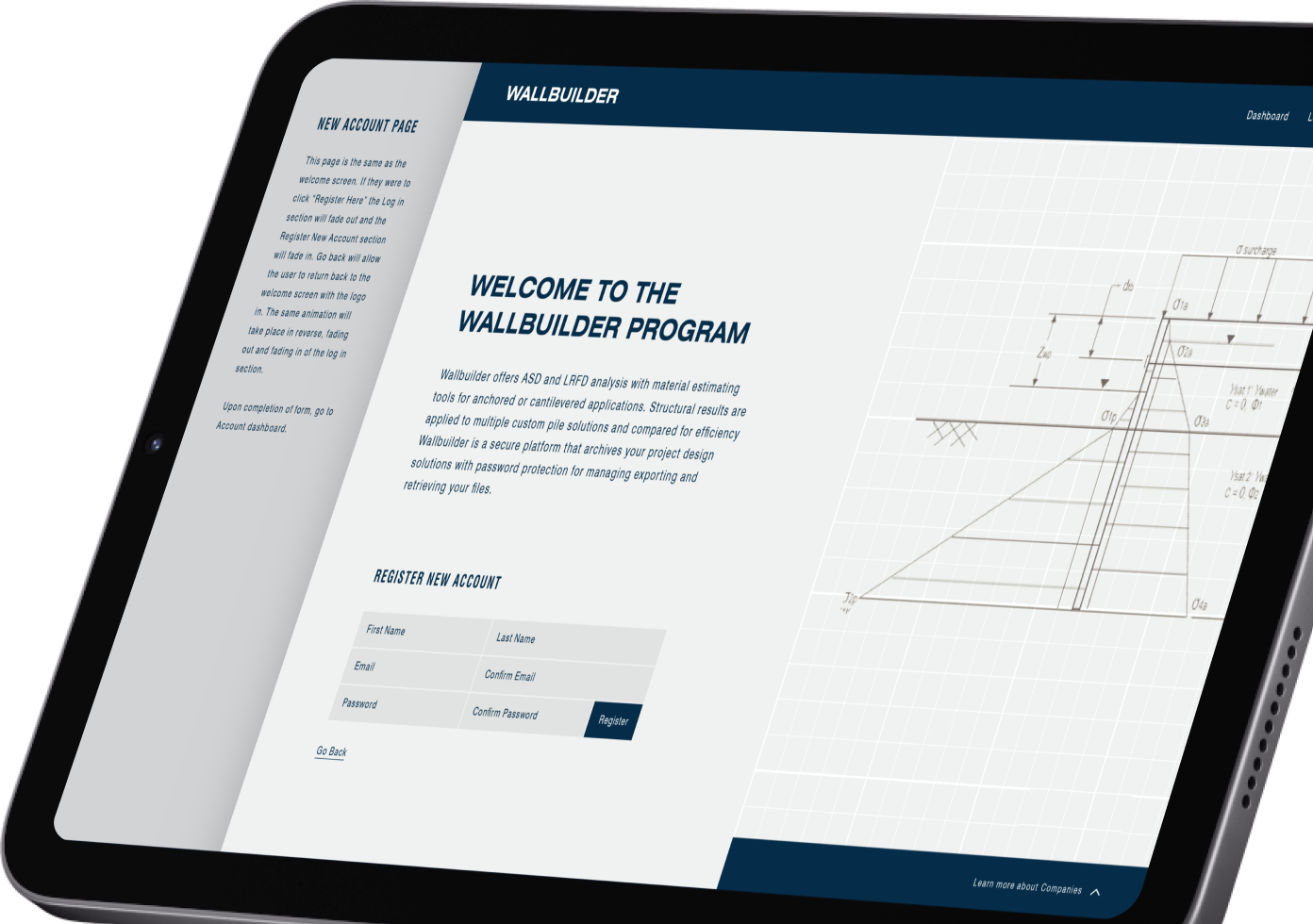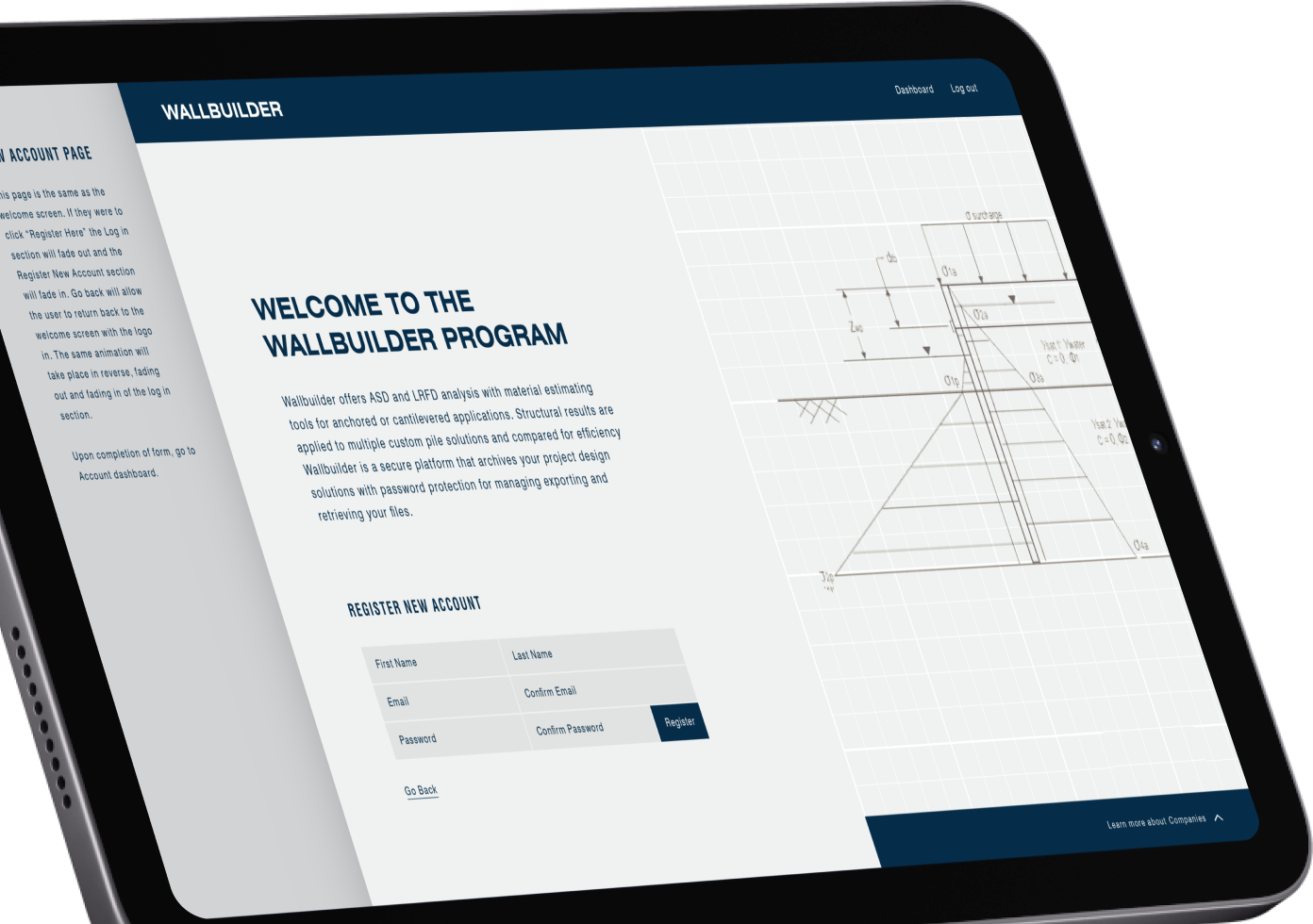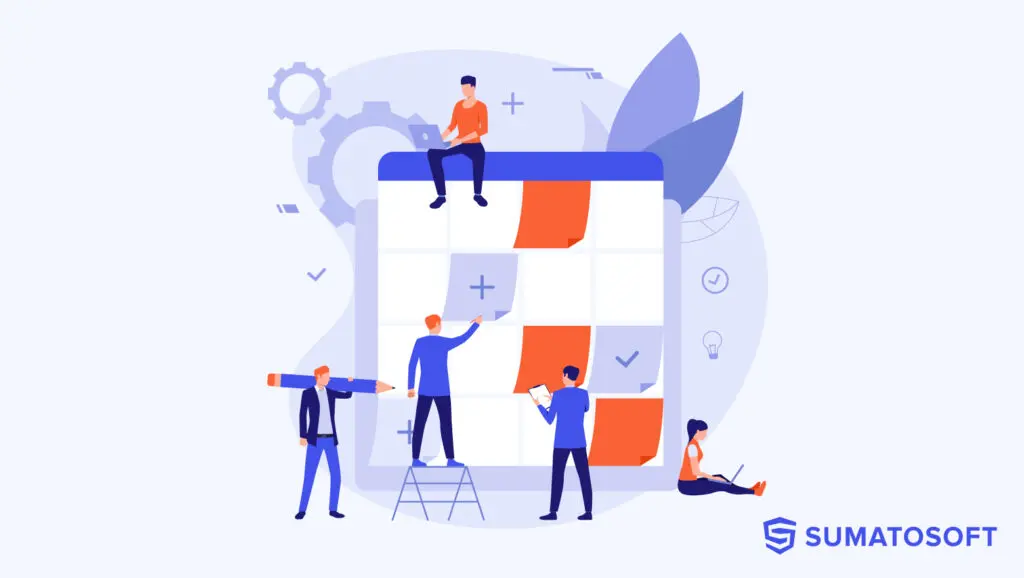Business analysis services
SumatoSoft provides business analysis services that eliminate uncertainty and align everyone from stakeholders to developers before the first line of code is written.
- For Startups, we define an MVP scope and get a build-ready blueprint.
- For SMBs, we convert workflows into structured software requirements.
- For Enterprises, we upgrade legacy systems and help create an internal ecosystem.
- For non-tech companies, we translate operations into digital solutions.
Our business analysis services
Many companies associate business analysis with the discovery phase, the early stage where goals, users, and requirements are defined. While discovery is essential, it’s only one part of the business analysis process. Our services cover the full product lifecycle: from market research and feasibility validation to ongoing implementation support and system audits.
Digitalization strategy preparation
We help you shape a digitalization strategy rooted in real business needs. We analyze your workflows, goals, business environment, and challenges to identify where digital solutions can bring measurable value. Through structured interviews, process audits, and risk assessment, we define a clear roadmap: what to automate, redesign, and build first. Such business analysis consulting services result in a focused strategy aligned with your operations, budget, and long-term vision.
Business niche analysis and risk assessment
Before any development begins, we analyze your industry, user base, competitors, and business context. This helps uncover what functionality your users expect, what competitors already offer, and where your product can stand out. Alongside this, we identify business and technical risks – such as regulatory hurdles, architectural constraints, or unclear roles – and suggest mitigation strategies early, when they’re still easy to solve.
Project discovery
Discovery is a structured phase where we define the product’s purpose, target users, key features, constraints, and initial UX flow. We align your stakeholders, gather assumptions, and turn early-stage ideas into an actionable plan. The output includes vision and scope documents, wireframes, initial estimates, and a shared understanding between business and technical teams. It’s how we make sure everyone is building the same product – before writing a single line of code.
System requirements specification (SRS) development
We create a formal document that defines exactly what the system must do, how it should behave, and under what constraints. This includes user roles, functional and non-functional requirements, integration points, edge cases, and acceptance criteria. The SRS becomes the single source of truth for developers, testers, and stakeholders, minimizing ambiguity and reducing rework during implementation. It’s the foundation of reliable estimation, testing, and delivery.
IT product ownership
If your project needs someone to own the backlog and keep the team focused, we take on the role of a proxy Product Owner. We write and refine user stories, validate deliverables, adjust priorities, and ensure that every sprint contributes to the business goal. This service is ideal for growing teams that lack in-house product leadership or for Clients who want to delegate product decision-making to a trusted expert.
System analysis
This service focuses on understanding how your existing software works, from workflows and data models to technical architecture and integration logic. It’s essential for projects involving refactoring, migration, or system upgrades. We identify inefficiencies, outdated components, or unsupported structures, and recommend how to evolve your system without disrupting critical business operations.
AI readiness estimation
Not every company or product is ready for AI, and pushing it too early can waste resources. We assess whether AI can bring real value to your product or workflow based on current data availability, infrastructure, and business processes. We propose realistic use cases, estimate effort and ROI, and outline the steps required to prepare for AI integration, so you can invest wisely and avoid building something that doesn’t scale or deliver value.
Digitalization strategy preparation
We help you shape a digitalization strategy rooted in real business needs. We analyze your workflows, goals, business environment, and challenges to identify where digital solutions can bring measurable value. Through structured interviews, process audits, and risk assessment, we define a clear roadmap: what to automate, redesign, and build first. Such business analysis consulting services result in a focused strategy aligned with your operations, budget, and long-term vision.
Niche analysis and risk assessment
Before any development begins, we analyze your industry, user base, competitors, and business context. This helps uncover what functionality your users expect, what competitors already offer, and where your product can stand out. Alongside this, we identify business and technical risks – such as regulatory hurdles, architectural constraints, or unclear roles – and suggest mitigation strategies early, when they’re still easy to solve.
Project discovery
Discovery is a structured phase where we define the product’s purpose, target users, key features, constraints, and initial UX flow. We align your stakeholders, gather assumptions, and turn early-stage ideas into an actionable plan. The output includes vision and scope documents, wireframes, initial estimates, and a shared understanding between business and technical teams. It’s how we make sure everyone is building the same product – before writing a single line of code.
SRS development
We create a formal document that defines exactly what the system must do, how it should behave, and under what constraints. This includes user roles, functional and non-functional requirements, integration points, edge cases, and acceptance criteria. The SRS becomes the single source of truth for developers, testers, and stakeholders, minimizing ambiguity and reducing rework during implementation. It’s the foundation of reliable estimation, testing, and delivery.
IT product ownership
If your project needs someone to own the backlog and keep the team focused, we take on the role of a proxy Product Owner. We write and refine user stories, validate deliverables, adjust priorities, and ensure that every sprint contributes to the business goal. This service is ideal for growing teams that lack in-house product leadership or for Clients who want to delegate product decision-making to a trusted expert.
System analysis
This service focuses on understanding how your existing software works, from workflows and data models to technical architecture and integration logic. It’s essential for projects involving refactoring, migration, or system upgrades. We identify inefficiencies, outdated components, or unsupported structures, and recommend how to evolve your system without disrupting critical business operations.
AI readiness estimation
Not every company or product is ready for AI, and pushing it too early can waste resources. We assess whether AI can bring real value to your product or workflow based on current data availability, infrastructure, and business processes. We propose realistic use cases, estimate effort and ROI, and outline the steps required to prepare for AI integration, so you can invest wisely and avoid building something that doesn’t scale or deliver value.
Industry experience and domain expertise
Our business analysis services apply across industries. From regulated platforms to customer-facing apps and complex operational systems, we understand domain specifics, user expectations, and technical constraints. We don’t start from zero, we bring proven patterns, relevant questions, and practical knowledge to every engagement.
Regulated and compliance-driven industries
We work with Clients where compliance and accuracy are non-negotiable. Our analysts ensure all requirements account for industry-specific regulations such as HIPAA, GDPR, ISO/IEC 27001, or financial reporting standards.
Industries include:

Customer-facing digital products
Here, user experience and time-to-market are key. We define feature sets and flows that support engagement, retention, and monetization – always aligned with the end user’s behavior and expectations.
Industries include:

Operational, process-heavy domains
These are environments where downtime is costly, workflows are complex, and systems must integrate well. We focus on process optimization, data flow clarity, and system scalability.
Industries include:

What our business analysts actually do
Our business analysts cover every aspect needed to turn your concept into a concrete, buildable solution. Everything we discover is compiled into a clear blueprint for development. At the end of the business analysis stage, you’ll have complete documentation – including the vision, scope, requirements, prototypes, and project plan – ready for designers and engineers to start building confidently. Key activities include:
Market & competitor research
We analyze your industry landscape and competitors to identify opportunities and best practices; this ensures your product will have a competitive edge and meet market expectations from day one.
Requirements elicitation & documentation
Through workshops and stakeholder interviews, we capture all functional and non-functional requirements for your software; every requirement is documented clearly in a software requirements specification (SRS), including use cases and user stories, so nothing is overlooked.
UX prototyping & user flow design
Before a single line of code is written, we create wireframes and prototypes to visualize the user interface and workflow; this early UX design helps validate that the solution will be user-friendly and lets you give feedback on the product’s look and feel.
Technical feasibility & tech stack guidance
Our analysts work with architects to perform technical research and feasibility analysis; we recommend the optimal technologies and architecture for your project (backend, frontend, integrations, etc.) to ensure scalability and performance from the start.
Project roadmap & estimation
You receive a detailed implementation plan covering phases, milestones, and resource needs; we provide accurate budget and timeline estimates, giving you a realistic schedule for development and deployment.
Risk analysis & mitigation
We identify potential risks early – from regulatory compliance gaps to scope creep – and plan how to mitigate them; by addressing hidden assumptions or constraints upfront, we prevent costly rework and delays later on.
When to bring in business analysis experts
You have an idea but no clear vision of features
You’re planning an MVP or a new product
An existing project needs improvement
Product logic and architecture are unplanned or unstable
Developers lack clear requirements
Stakeholders disagree on what to build
You need a technical feasibility check
Requirements are missing or constantly changing
The backlog is overloaded or lacks prioritization
Optimize Your Operations
Improve efficiency, reduce costs, and boost your bottom line. Discover how our business analysis can streamline your processes.
Projects required complex business analysis
Why choose SumatoSoft for BA services
Choosing the right partner for business analysis services can make a critical difference. Here’s why SumatoSoft stands out as a professional business analysis services company:
Proven track record
We have 13+ years of experience in software development and have delivered 250+ custom solutions to Clients across 25+ countries. Our methods are battle-tested on projects of varying scales and complexities. We’re proud to maintain a 98% Client satisfaction rate over hundreds of projects.
Experienced team
Our business analysts are seasoned experts who understand both business strategy and technology. They work hand-in-hand with our technical leads (70% of our engineers are senior-level) to ensure no detail is missed. This blend of domain and technical expertise means our analysis is both comprehensive and technically feasible from the start.
Focus on your success
We treat our Clients’ projects as our own. That means we prioritize transparency, communication, and value at every step. You’ll always know what we’re doing and why. Our analysts can join your team virtually, working closely with your stakeholders to truly understand your business. We aren’t just gathering requirements – we’re actively looking for ways to make your product and processes better.
Fast turnaround, quality results
Our efficient processes allow us to deliver results quickly without sacrificing quality. For example, after our thorough discovery workshops and research, you can expect a complete project blueprint (specifications, prototypes, estimates) in a matter of weeks – not months. In one case, our analysis-driven approach enabled us to develop a fully functional MVP in just 3 months – a timeline that would be impossible without upfront clarity and precise planning. We know speed matters, so we accelerate time-to-market while ensuring robust outcomes.
Transform Your Business Today
Ready for a change? Our comprehensive business analysis services will guide you from current challenges to future success. Request a personalized proposal.
How we deliver business analysis
This process of running business analysis services can be compressed or extended based on project goals. We support a rapid 2-week discovery, a full multi-sprint requirements engagement, or quick strategy sessions. Either way, our goal is always the same: to translate your idea into clear, buildable, and valuable software.
We start by learning your business domain, goals, constraints, and expected outcomes. This phase sets the direction and defines what success looks like.
- align with stakeholders and roles;
- capture business goals, constraints, and KPIs;
- define the level of formality and depth required.
We gather detailed insights through structured sessions with all relevant stakeholders – product owners, end users, domain experts, and technical teams.
- identify pain points and user needs;
- uncover hidden assumptions;
- map out critical processes and workflows.
Using industry-standard techniques, we extract and organize all functional and non-functional requirements, ensuring nothing critical is missed.
- define user roles and use cases;
- describe system behaviors and requirements;
- capture performance, security, and compliance constraints;
- create visual models (UML, BPMN, etc.) when helpful.
Before development, we translate requirements into early interface concepts and user flows to validate usability and logic.
- build wireframes or low-fidelity prototypes;
- align flows with user expectations;
- get stakeholder feedback and iterate.
We work closely with architects and engineers to ensure the requirements are feasible, technically sound, and align with the intended architecture.
- evaluate integration points;
- choose the tech stack (if required);
- spot performance or scalability risks early.
Everything we learn becomes a structured knowledge base for your product team and developers. You get formal documentation plus effort and timeline estimates.
- system requirements specification (SRS);
- user stories or use case models;
- visual artifacts and UX flows;
- effort estimates, roadmap, and risk assessments.
Our BAs stay involved through development (if needed), answering questions, updating documentation, and managing scope.
- clarify edge cases;
- refine backlog items;
- keep business priorities front and center.
Tools that turn ideas into structured plans
Our business analysis process is built on proven methods and techniques. Every tool serves a specific purpose, and we know exactly what the right tool is for the current situation. These tools and techniques help us gather precise information, reduce ambiguity, assess feasibility, and communicate complex ideas clearly to all stakeholders. Below is a structured view of how we work.
Understanding the business context
- stakeholder interviews;
- context diagrams;
- business process modeling (BPMN, flowcharts);
- event storming;
- SWOT analysis;
- market and competitor analysis;
- AI readiness assessment.
Eliciting and structuring requirements
- requirements workshops;
- use case modeling;
- user story mapping;
- personas and user journey mapping;
- job stories;
- scenario-based analysis;
- requirements traceability matrix (RTM);
- MoSCoW prioritization;
- change impact analysis.
Validating feasibility and risk
- gap analysis;
- technical feasibility assessment;
- risk analysis;
- non-functional requirements analysis;
- regulatory and compliance checklists (e.g., HIPAA, GDPR).
Solution design & communication
- wireframing and prototyping (low/high fidelity);
- impact mapping;
- data flow diagrams (DFD);
- flowcharts / logic maps;
- product roadmapping;
- backlog grooming and refinement;
- acceptance criteria definition;
- documentation (SRS, user stories, tech specs).
Business analysis services results
Our business analysis services result in a tailored set of deliverables – no boilerplate, no extras you don’t need. Whether you need help with system architecture, requirements definition, UX flows, or all of the above, we provide exactly what your project demands to move forward with clarity and confidence.
Project vision and scope
We define the product’s purpose, core objectives, target audience, and boundaries; this document becomes the reference point for all teams – preventing scope creep, conflicting expectations, and unclear goals.
Requirements specification
Includes both functional and non-functional requirements, structured in a clear, traceable format; every requirement is verified for completeness, clarity, and feasibility – so developers can build without guesswork, and testers know exactly what to validate.
Use case model & user stories
We describe system behavior from two perspectives: formal use cases that map each interaction step-by-step; and user stories that focus on real user needs. Together, they provide depth and context for implementation decisions.
Business analysis models
We build process diagrams, workflows, state machines, and data flow charts that expose system logic and dependencies; these models are crucial when dealing with complex rules, multi-role systems, or integrations with third-party tools.
Technical specifications
We describe system architecture components, data structures, API interactions, and known constraints; this enables faster onboarding for engineers and ensures architectural decisions are rooted in business goals and technical reality.
User interface wireframes
Wireframes show how the user will navigate and interact with the system; we include annotated screens, flow diagrams, and layout structure – early enough to fix UX flaws before UI design or development begins.
Risk and assumptions register
We identify what’s uncertain, what’s assumed, and what might break – and we document it; this artifact is essential for leadership and delivery teams alike to make informed tradeoffs and contingency plans.
Effort and timeline estimation
We break down the proposed scope into manageable parts, estimate complexity and duration, and map the path to release; our estimates are reviewed by tech leads and grounded in real capacity – not generic templates.
Project vision and scope
We define the product’s purpose, core objectives, target audience, and boundaries; this document becomes the reference point for all teams – preventing scope creep, conflicting expectations, and unclear goals.
Requirements specification
Includes both functional and non-functional requirements, structured in a clear, traceable format; every requirement is verified for completeness, clarity, and feasibility – so developers can build without guesswork, and testers know exactly what to validate.
Use case model & user stories
We describe system behavior from two perspectives: formal use cases that map each interaction step-by-step; and user stories that focus on real user needs. Together, they provide depth and context for implementation decisions.
Business analysis models
We build process diagrams, workflows, state machines, and data flow charts that expose system logic and dependencies; these models are crucial when dealing with complex rules, multi-role systems, or integrations with third-party tools.
Technical specifications
We describe system architecture components, data structures, API interactions, and known constraints; this enables faster onboarding for engineers and ensures architectural decisions are rooted in business goals and technical reality.
User interface wireframes
Wireframes show how the user will navigate and interact with the system; we include annotated screens, flow diagrams, and layout structure – early enough to fix UX flaws before UI design or development begins.
Risk and assumptions register
We identify what’s uncertain, what’s assumed, and what might break – and we document it; this artifact is essential for leadership and delivery teams alike to make informed tradeoffs and contingency plans.
Effort and timeline estimation
We break down the proposed scope into manageable parts, estimate complexity and duration, and map the path to release; our estimates are reviewed by tech leads and grounded in real capacity – not generic templates.
Flexible engagement models to fit your workflow
Every project has a different context – that’s why we support three different engagement models for our business analysis services. They include full-cycle support, when a business analyst is embedded in your team; expert planning before development, feasibility analysis, and more. Use the comparison below to see which engagement model fits your goals, budget, and internal resources best.
| Criteria | Full-cycle development | Dedicated team | BA-as-a-service |
|---|---|---|---|
Project ownership |
SumatoSoft owns the full delivery cycle, including BA, design, development, QA |
Shared. The Client owns delivery, while SumatoSoft provides ongoing business analysis |
SumatoSoft owns planning and deliverables only; no development responsibility |
Billing model |
Included in full project budget (fixed price or time & material)
|
Monthly rate per analyst (part-time or full-time) |
Fixed price or hourly (time & material), based on agreed scope |
Cooperation format |
Integrated, cross-functional team managed by SumatoSoft |
BA joins Client’s internal team and works within their workflow/tools |
Standalone engagement focused on planning, discovery, or validation |
Flexibility of scope |
Moderate – discovery shapes scope, but managed toward delivery milestones |
High – priorities can change sprint to sprint |
Low to moderate – scope is defined and fixed for each engagement |
Engagement duration |
Mid to long term – usually tied to development timeline |
Long-term or recurring – can scale up/down as needed |
Short-term or phased – focused on pre-development deliverables |
Deliverables provided |
All BA artifacts required for development – aligned with UI/UX and technical delivery |
Continuous specs, user stories, backlog support, diagrams |
Agreed package: e.g., SRS, use cases, wireframes, timeline, and risk register |
Best used for |
New product development, MVP planning, digital transformation initiatives, or redesigns where SumatoSoft handles the full cycle. |
Staff augmentation, internal system development, Agile teams needing full-time BA support, or enterprise-level projects with multiple streams. |
Presale support, RFP preparation, technical feasibility analysis, budgeting/planning stages, or before selecting a development vendor. |
Criteria
Project ownership
Billing model
Cooperation format
Flexibility of scope
Engagement duration
Deliverables provided
Best used for
Full-cycle development
SumatoSoft owns the full delivery cycle, including BA, design, development, QA
Included in full project budget (fixed price or time & material)
Integrated, cross-functional team managed by SumatoSoft
Moderate – discovery shapes scope, but managed toward delivery milestones
Mid to long term – usually tied to development timeline
All BA artifacts required for development – aligned with UI/UX and technical delivery
New product development, MVP planning, digital transformation initiatives, or redesigns where SumatoSoft handles the full cycle.
Dedicated team
Shared. The Client owns delivery, while SumatoSoft provides ongoing business analysis
Monthly rate per analyst (part-time or full-time)
BA joins Client’s internal team and works within their workflow/tools
High – priorities can change sprint to sprint
Long-term or recurring – can scale up/down as needed
Continuous specs, user stories, backlog support, diagrams
Staff augmentation, internal system development, Agile teams needing full-time BA support, or enterprise-level projects with multiple streams.
BA-as-a-service
SumatoSoft owns planning and deliverables only; no development responsibility
Fixed price or hourly (time & material), based on agreed scope
Standalone engagement focused on planning, discovery, or validation
Low to moderate – scope is defined and fixed for each engagement
Short-term or phased – focused on pre-development deliverables
Agreed package: e.g., SRS, use cases, wireframes, timeline, and risk register
Presale support, RFP preparation, technical feasibility analysis, budgeting/planning stages, or before selecting a development vendor.
Start Your Business Transformation
The first step to a better business is understanding it. Let us provide the clarity you need to move forward. Contact us for a custom quote.
Cost samples
Business analysis isn’t guesswork – and neither is our pricing.
Below are typical cost ranges based on real Client projects, designed to give you a realistic idea of the investment required. Transparent, flexible, and always aligned with your business goals.
*The final cost will depend on the project scale and scope. Contact us to get a detailed estimation.
Business digitalization strategy
Appr. $4,800 – $8,400
We help you define a step-by-step digital transformation roadmap. This includes workflow analysis, risk assessment, prioritization, and high-level architecture recommendations. Perfect for companies planning modernization or expansion.
AI implementation strategy
Appr. $6,000 – $7,200
We assess your AI readiness, analyze potential use cases, and define the scope, risks, and technical fit for AI in your product or operations. You’ll receive a clear implementation plan before any development begins.
Discovery phase
Appr. $6,000 – $9,600
A complete pre-development business analysis package: stakeholder interviews, requirements documentation, UX wireframes, technical feasibility analysis, and development estimates. Ideal for teams building new custom products from scratch.
Outstaffing
Rate: Negotiable
Hire one or several business analysts to work under your project management. Great for augmenting your team with experienced professionals without hiring full-time staff.
Project support
Custom pricing that is a part of software development efforts
Ongoing business analysis involvement during product development. We help with backlog grooming, change requests, scope adjustments, and feature refinement based on user feedback and metrics.
Why it pays off to start with analysis
Business analysis is not a formal step at the beginning of the software development process. Businesses use these services to clarify their product vision, reduce development frictions, cut development costs, and proactively address risks. Business analysis services bring huge benefits over time.
Build the right product
We ensure your software solves real business problems, not just fulfills vague ideas. Every feature is validated against business goals and user needs (validation) and double-checked for clarity, feasibility, and consistency (verification). This way, you avoid building the wrong thing, or building the right thing in the wrong way.
Save time and budget
We prevent scope creep, technical dead-ends, and catch gaps, like business rules no one mentioned or not evident but critical use cases, before development starts. This avoids rework, delivery delays, and budget overruns, often saving months of project time.
Accurate planning
A plan without its step descriptions is not so much a roadmap as a sketch on a napkin – giving you a rough idea of the resources you’ll need but leaving the details very vague. We deliver concrete estimates backed by clear requirements and technical feasibility. That means stakeholders can plan, invest, and build with full visibility into what’s ahead.
Scalable, future-proof design
We help architect the solution with long-term growth in mind. We define modular architecture, identify scaling bottlenecks early, choose flexible technologies, and document key assumptions. This ensures your system handles higher loads, supports integrations, and allows for feature expansion without requiring full redesigns later. Your system won’t break when user volume grows or when features need to expand.
Stronger product-market fit
We align functionality with real market demand, ensuring you don’t waste effort on features no one needs. We prioritize features based on user pain points, business value, and competitor benchmarks. The result: a sharper MVP and a more relevant product.
Confident stakeholder buy-in
You walk away with structured documentation: vision, scope, estimates, and prototypes – that justify investments and win approvals fast.
How our BA role changes to fit your project
While our core responsibilities remain consistent – research, documentation, planning, and validation – the way we work depends on your setup. Whether you’re building from scratch, scaling your team, or modernizing legacy systems, we adjust our focus to deliver the most value.
For full-cycle software development
- coordinate the process – align business and technical teams from discovery through delivery;
- conduct regular demos – ensure stakeholders review and validate results at every milestone;
- give recommendations – propose changes that improve logic, UX, and performance;
- minimize changes mid-sprint – clarify scope upfront to reduce interruptions later;
- evaluate competitors – spot gaps and opportunities through structured analysis;
- document everything – from vision to edge cases, we write specs that leave no room for doubt.
For team augmentation
- handle task preparation – break down business needs into actionable tasks for developers;
- maintain product focus – keep the team aligned with the broader product vision;
- assign responsibilities – clarify who does what – and why – to speed up delivery;
- support the team – answer questions, remove blockers, and refine the backlog continuously.
For legacy system modernization
- analyze the current product – understand what’s working, what’s outdated, and what’s missing;
- prioritize improvements – focus effort where it delivers the most impact;
- guide the redesign – align old workflows with modern solutions and technologies;
- support competitive advantage – ensure the new system gives you more than just parity – it gives you an edge.
What happens when you skip business analysis
It’s tempting to dive into development without structured analysis – especially when budgets are tight or deadlines are near. But without a solid foundation, your team ends up solving the wrong problems, building unstable architecture, or burning time on endless clarification. Here’s what can go wrong – and why it happens.
Scope creep and shifting priorities
When requirements aren’t fully defined upfront, teams rely on assumptions; as development progresses and new stakeholders get involved, priorities shift – not out of poor discipline, but because the initial scope wasn’t validated or locked; that’s when unplanned features start surfacing mid-sprint, slowing progress and bloating the backlog.
Useless features that no one asked for
Without early validation of user needs, it’s easy to invest effort in building functionality that users don’t actually need or understand; these features often sound useful in meetings but don’t translate into real value – and once they’re coded, they’re rarely removed due to sunk cost.
Developer confusion and repeated clarification
Even the best developers can’t code against ambiguity; when specs are vague, incomplete, or scattered across email threads, developers spend hours chasing clarification; that slows down delivery and increases the risk of building features incorrectly – leading to costly rework later.
Inaccurate estimates and missed budgets
Time and cost estimates rely on scope, complexity, and risk – all of which come from proper business analysis; if your initial plan is based on assumptions or rough guesses, estimates won’t hold; this leads to budget overruns, unrealistic timelines, and frustration among stakeholders.
Architecture that breaks under pressure
Skipping analysis means skipping architecture planning; without knowing how the system should behave in the long run – user load, data volume, integration points – developers may build something that works now but fails when scaled; rebuilding later is always more expensive than planning right.
Stakeholder misalignment and mistrust
When business goals aren’t formally captured and translated into specifications, different teams develop different expectations; features get interpreted in conflicting ways, and progress gets blocked by disagreements; this creates mistrust in both the process and the outcome.
Frequently asked questions
When should I use business analysis services?
Use business analysis services at the start of any custom software initiative – whether it’s building from scratch, modernizing legacy systems, or implementing new features. It’s especially valuable when your idea isn’t fully formed, requirements are unclear, or you need to reduce risk before investing in development.
How do your services reduce project costs?
We catch gaps like undocumented use cases, prevent scope creep, and uncover technical roadblocks before development starts. Our solution services help avoid rework, missed deadlines, and budget overruns. On average, a thorough discovery phase saves teams weeks – sometimes months – of wasted effort.
What deliverables can I expect from your business analysts?
You’ll receive clearly structured documentation including:
- vision and scope statements;
- requirements specification (SRS);
- technical requirements;
- UX wireframes or prototypes;
- project estimation and roadmap;
- use cases and user stories;
- risk and feasibility assessments.
How do you ensure alignment with my business goals?
We begin every engagement by identifying your business objectives, user needs, and success criteria. Then, every requirement and feature is validated against those goals through stakeholder interviews, workshops, and traceability techniques. Nothing gets built just because “it sounds good.”
What is a business analysis service?
It’s a structured set of activities aimed at understanding your business needs, defining what software should do, and translating that into detailed, actionable documentation for development teams. This service is provided by a business analysis services company, and it bridges the gap between stakeholders and engineers, reducing uncertainty and aligning execution with vision.
Let’s start
If you have any questions, email us info@sumatosoft.com



